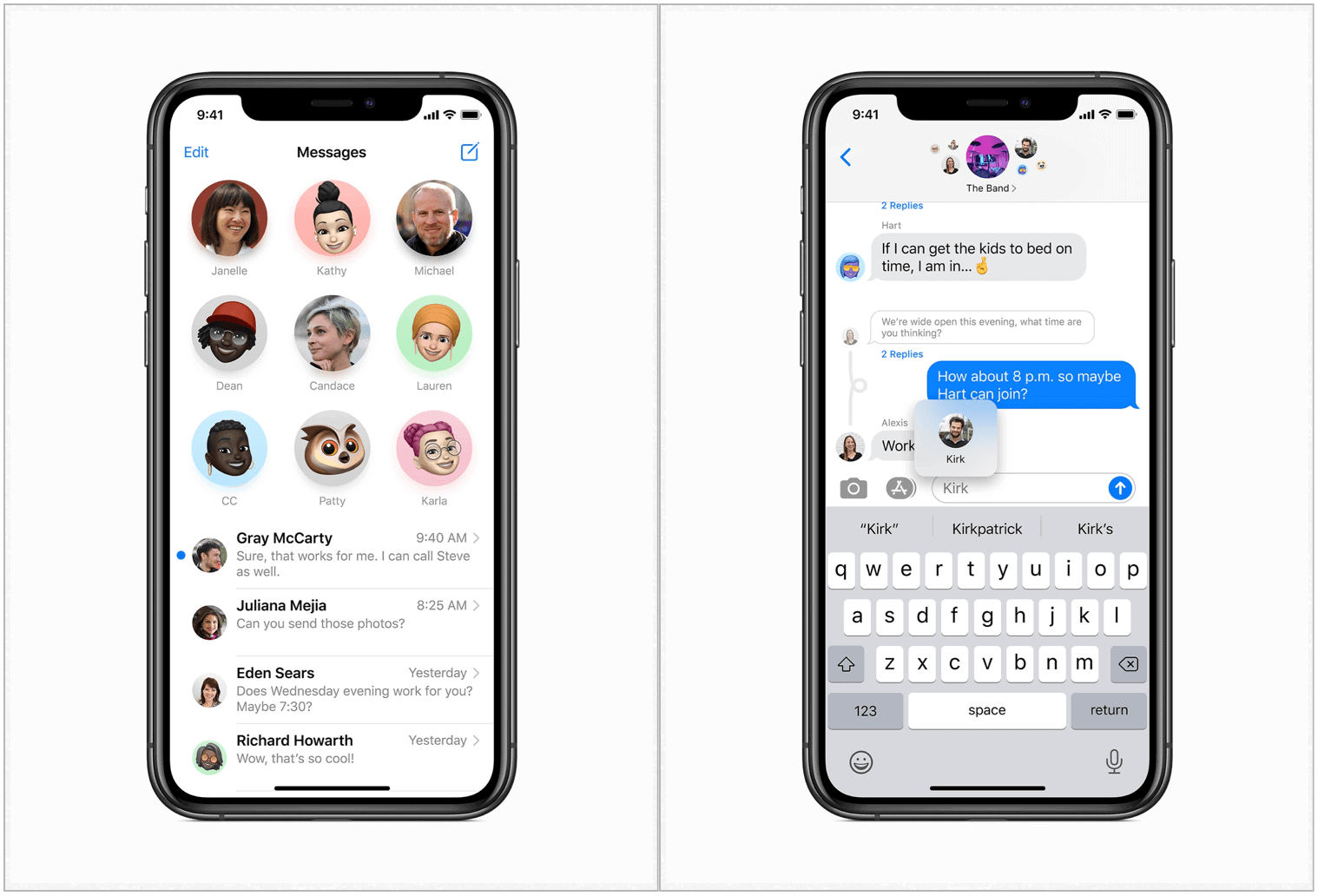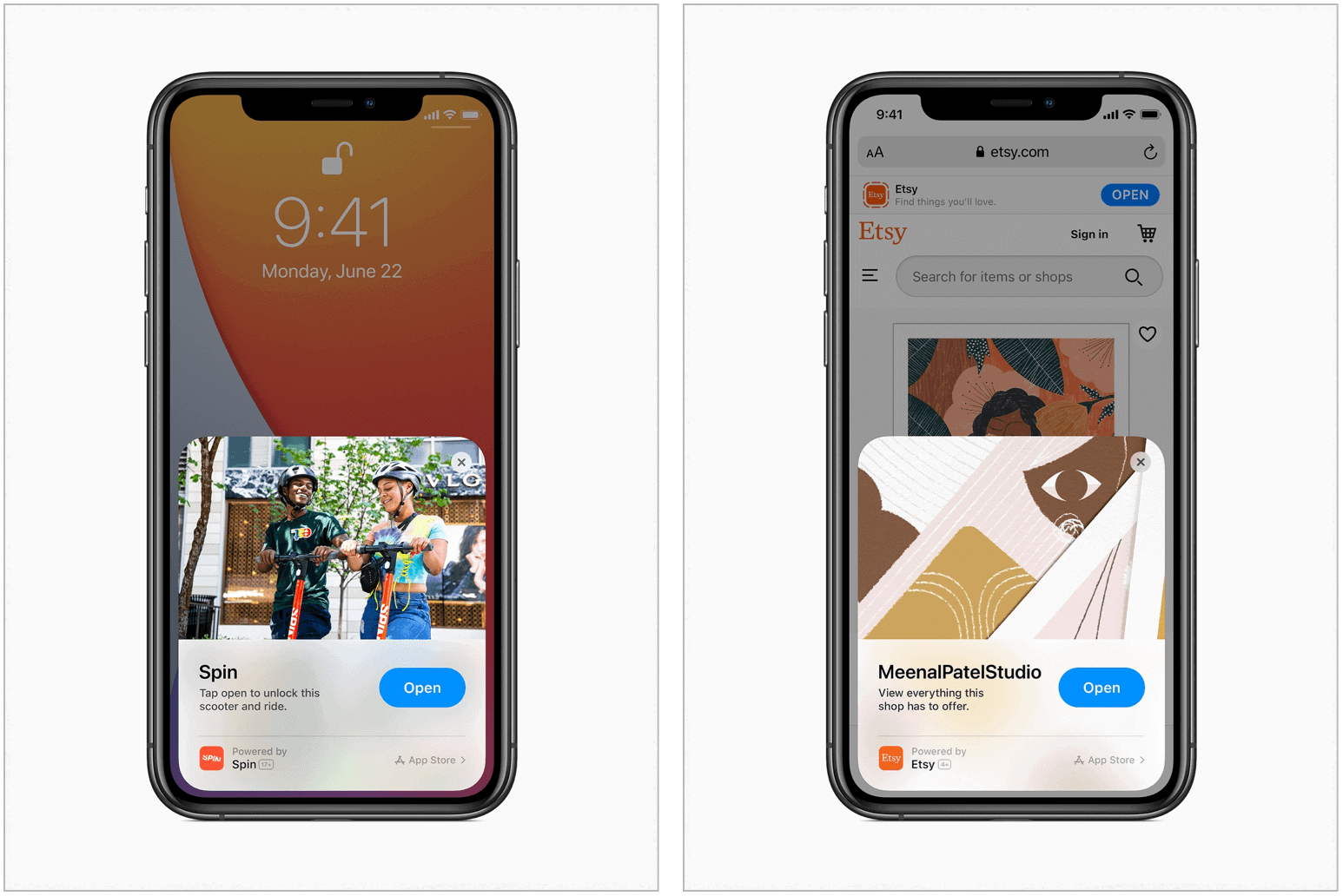1. Is it Mac or Mobile?
The biggest surprise of this year’s keynote address was the reinvention of macOS and Mac both in terms of software and hardware. On the software side, Apple left no one to doubt that a total merging of mobile and desktop is probably going to happen, perhaps sooner than anyone outside of the company could have imagined. The macOS Big Sur update, as it’s known, looks a lot like the newly announced iOS 14 and iPadOS 14 software updates for iPhone and iPad, respectively.
Updated Apps
With macOS Big Sur, Apple has created a redesign that feels both lighter and more robust than previous versions. From its updated menu bars to its new and updated sounds, macOS 11.0 feels welcoming and familiar, starting with the native Messages app. The mobile version of Messages tends to get a significant update each year. The Mac version has never received the same kind of treatment until now. For example, the communication tool finally has Memoji and message effects such as balloons and confetti. It also includes features recently introduced on mobile link inline replies and pin conversations. The Safari app for Mac has also received some must-needed attention in MacOS Big Sur. Apple says this version offers improved performance and power efficiency than previous browsers. It also includes a customizable start page that should make it easier to find your most important online content. There’s also a built-in translator.
Other Tools and Privacy
macOS Big Sur also includes an updated Notification Center, one-touch Control Center that sits directly off the menu bar, expanded Maps app, and much more. For privacy and security, Apple’s making it easier to identify which web sites have trackers, and what app developers are doing with your data. You’ll also find faster software updates and better battery optimization on MacBooks.
Apple Silicon
One of the most far-reaching announcements to come out of WWDC is Apple’s decision to begin replacing Intel chips with its own on future Macs starting this fall. The change means that future Macs will be much more like Apple’s mobile devices on the inside. In doing so, apps on one platform will work on another. It’s unknown which Macs will get the Apple silicone treatment first. However, Apple noted that additional Intel-based devices were still in the pipeline.
2. Apple still loves Intel, But Not For Long
The process of going from Intel to Apple silicone could leave many scratching their heads when it comes time to buy a new computer. No doubt, future Intel Macs will continue to get software and hardware support like previous models. However, there’s the possibility that support could dry up quicker than the average buyer might find accessible. Less than two decades ago, Apple moved Macs from PowerPC to Intel. The last PowerPC Macs saw most support end after only three years. Would-be Intel Mac buyers should keep this in mind.
3. It’s Still About iPhone
Like a Saturday fight night, Apple typically leaves the best for last at press events. Because of Apple’s silicone announcement, Mac got the final slot during this year’s WWDC keynote. Despite this, make no mistake, that Apple is still relying heaviest on iPhone moving forward. One year after iPadOS 13 largely overshadowed iOS 13, the iPhone operating system is back with a vengeance. From new widgets on a refreshed Home screen to an App Library that makes it easier to find installed software, iOS 14 is a significant release that pushes the ball in a positive direction. The robust nature of the new iOS software release suggests the upcoming iPhone 12 lineup could prove much more significant than previously imagined.
4. Long Live the Recorded Keynote Address
Apple will no doubt want to return to live keynote addresses once it’s safe to do so. Perhaps, it shouldn’t. This week’s professionally produced event avoided the over-the-top banter that’s often associated with these types of showcases when live. Looking forward, Apple would be wise to keep the big announcements in a recorded format, then pivot to on-site question and answer sessions with developers and members of the press.
5. Health is still important to Apple
As long-rumored, Apple finally brought a native sleep tracking solution to Apple Watch. The tool measures micro-movements with the Watch’s accelerometer to determine how much sleep a user gets each night. It uses this information to offer recommendations on how to get better sleep. The sleep tracker isn’t the Apple Watch’s only new feature. With watchOS 7, Apple’s also introducing more workout types, including core training, dance, functional strength training, and cool down. It also includes a hand-washing tool ideally suited to help fight off COVID-19.
6. App Clips: the Feature of the Year?
Being out and about could be forever changed with Apple’s new App Clips feature. By scanning NFC tags and QR codes, or newly Apple-designed App Clip codes, iPhone users can learn more about a particular product or business at the point of contact just by using a mobile device. By doing so, consumers and businesses alike could better connect before making a transaction. The success (or failure) of App Clips will largely depend on whether businesses take advantage of the new program. Here’s hoping they do because this sounds exciting!
7. AirPods are the Future
No new AirPods (or any hardware) were announced this week. And yet, the wearable device did get two notable mentions. Beginning with the new round of software updates, AirPods will automatically switch between active devices paired to the same iCloud account. The device switching works for Apple and Beats headphones that feature the Apple H1 headphone chip. Additionally, the AirPods Pro will soon offer spatial audio with dynamic head tracking. The theater-like, immersive listening experience is created by applying directional audio filters, and slowly adjusting the frequencies each ear receives. Both updates, which don’t require new hardware, should make the AirPods lineup even more popular and tie users even more to Apple devices such as iPhone and iPad.
8. Get Ready for a Big Fall
With WWDC in the rearview mirror, attention at Apple will again turn to the most significant part of their yearly calendar. In September, we’re likely to see the introduction of four new iPhones and a next-generation Apple Watch. Before (or later), all non-iPad Pro tablets should get a 2020 update. On the Mac front are the first previously mentioned Apple silicon models plus new Intel versions. This year, we’ve only seen updates to the 13-inch MacBook Pro and MacBook Air. The Mac Pro, iMac, iMac Pro, Mac mini, and 16-inch MacBook Pro are fair game for updates. Before January, we could also see the arrival of new audio products, including third-generation AirPods and a second-generation HomePod. New over-ear headphones branded with the Apple name could also make a debut, as could a new Apple TV. Regardless, WWDC shows Apple is weathering the storm caused by COVID-19 and hoping for a great second half of this most unusual year. Stay tuned for an exciting ride!
![]()




